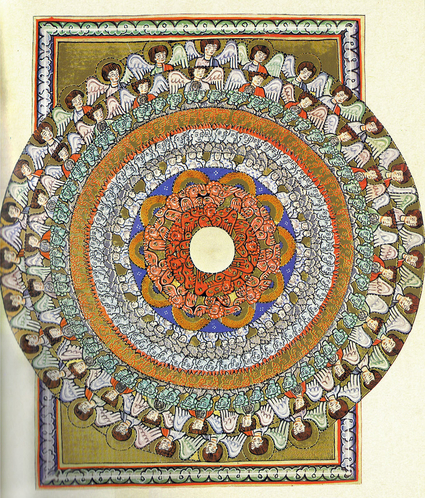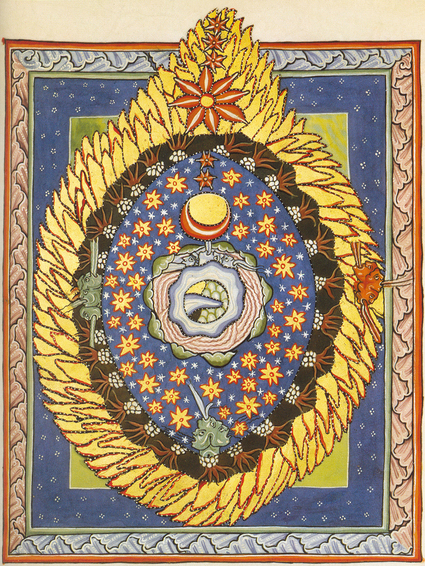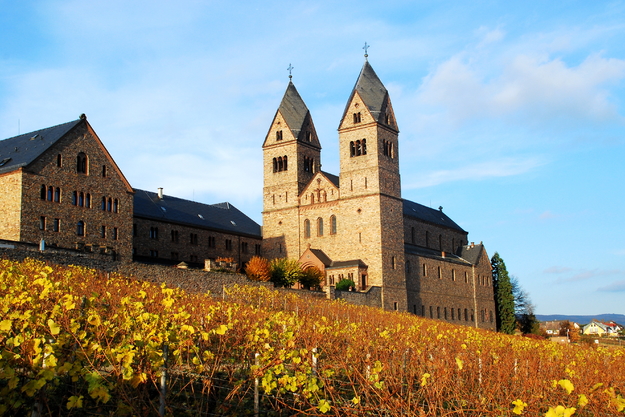Patricia Ranft's Ruminations
In 2014, historian Patricia Ranft published a paper entitled 'Ruminations on Hildegard of Bingen (1098-1179) and autism'. In it, she collected and interpreted sources dating back to Hildegard's childhood and spanning her adult life in order to illuminate the possibility that Hildegard possessed a number of traits we would today classify as autistic. Click here for a detailed summary of the paper.
A difficult childhood
For example, Ranft found evidence that Hildegard was a socially secluded child who had difficulty speaking in the first years of her life. She summarises: 'Hildegardian sources describe a child […] beset with an undefined 'weakness', social isolation, deficits in expressive oral communication, difficulty in expressing needs, extreme distress at failed attempts at relationship and withdrawal in the face of failure.'
Since her family was relatively wealthy, they were able to secure a safe place in a monastery for their peculiar daughter, a decision that proved to be very fortunate for Hildegard.
Talent, drive, and empathy
Although her difficulties did not disappear during Hildegard's adulthood, monastic life allowed her to learn to manage them while also realising her potential and gaining influence in her community. Ranft writes that Hildegard's treatises Physica and Causa et Curae, as well as her innate musical abilities are a testament to a single-mindedness and willingness to abandon outside interests which she seemed to share with many autistic people today, as well as a possible posession of 'savant skills that approximately 10% of the autistic population possesses (as compared to 1% of the general population)'.

In addition to this, Ranft recognises in Hildegard an unusually 'close association with the mentally/socially disabled', in particular mentally ill women, whom she allowed to spend time in her monastery. It is easy to speculate that this compassion could have come from her own experience with neurodivergence.
Visual and visionary thinking
Ranft also ruminates on the idea that Hildegard's vivid and intense visions, for which she gained fame already in her own time, could be interpreted to correspond to 'the unusual sensory experiences of many [autistic] individuals'.
Hildegard herself maintained that what she learned in her visions was visual, not mystical, knowledge: 'I never suffer the defect of ecstasy in these visions. And fully awake, I continue to see them day and night'. She also believed that 'her visio was 'linked in a mysterious way with her recurrent bodily afflictions'.
Hildegard's artistic expressions of her visions also point to what Ranft describes as a 'highly imaginative, visually oriented intellect' that pictured structures and events 'in an entirely unique and creative manner'.
Hildegard as a role model: special interests and safe spaces
At the end of the day, it is of course impossible to diagnose someone who was alive a thousand years ago as autistic or neurodivergent, and it is not Ranft's nor our intention to do so. What matters, however, is that Hildegard clearly had an extraordinary mind, and thus continues to be inspiring for others who also do.
Her fixation on the 'special interests' of music, herbal knowledge, and her tireless work to document them are one source of inspiration, her position of leadership and power as a much respected and admired woman in her time is another.
But there is a third way in which Hildegard von Bingen can serve as a role model, and it has to do with the monastery in which she lived.
Patricia Ranft speculates that many of the characteristics of monastic life, such as its strictly structured daily routines, were beneficial and in fact instrumental to Hildegard realising her full potential as an adult. 'Medieval monasticism', she concludes, 'however unwittingly, was well suited for fulfilling the secondary function of integrating a spectrum of behavioural phenotypes into its life.'
Thus, Hildegard's example can also teach us about the importance of finding or creating safe and structured (communal) spaces to thrive in.
Sources
Ranft P. Ruminations on Hildegard of Bingen (1098-1179) and autism. J Med Biogr. 2014 May;22(2):107-15. doi: 10.1177/0967772013479283. Epub 2013 Jul 29. PMID: 24585581.


